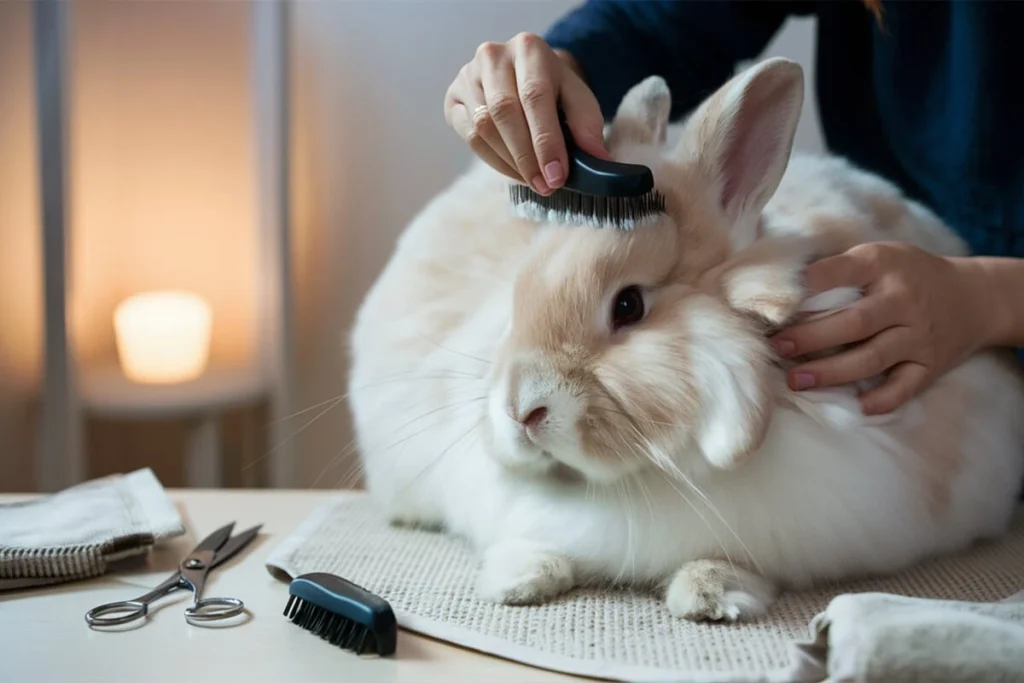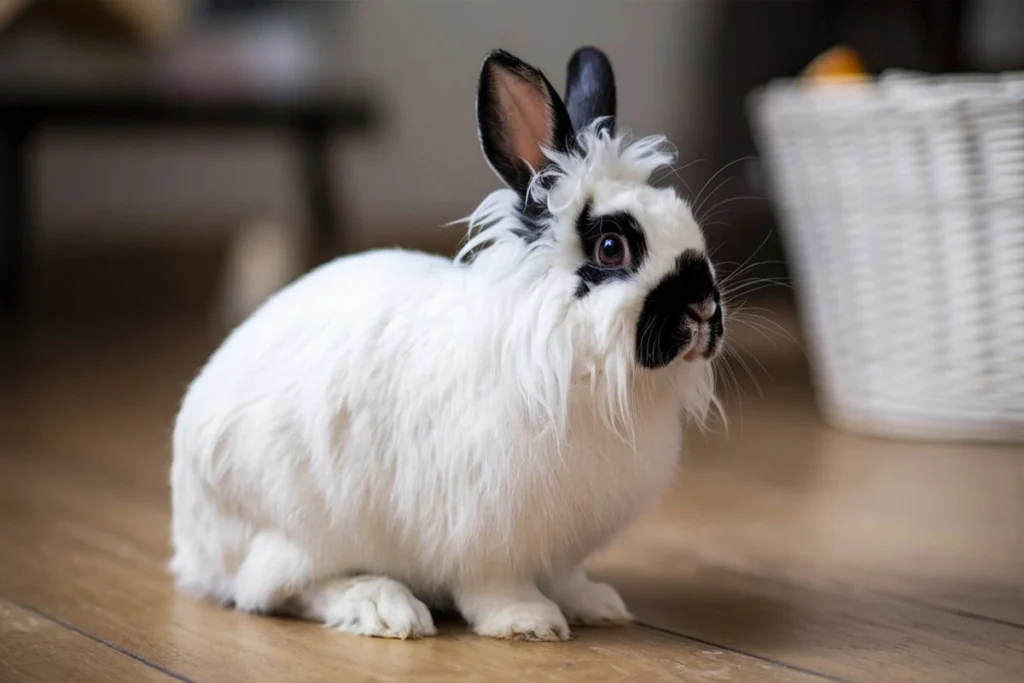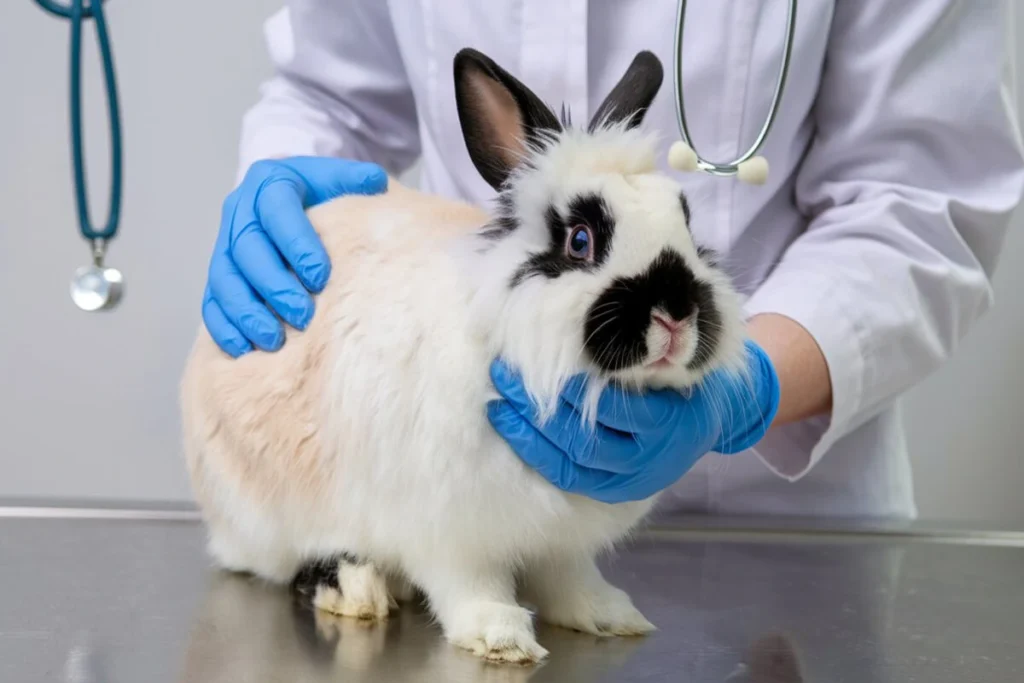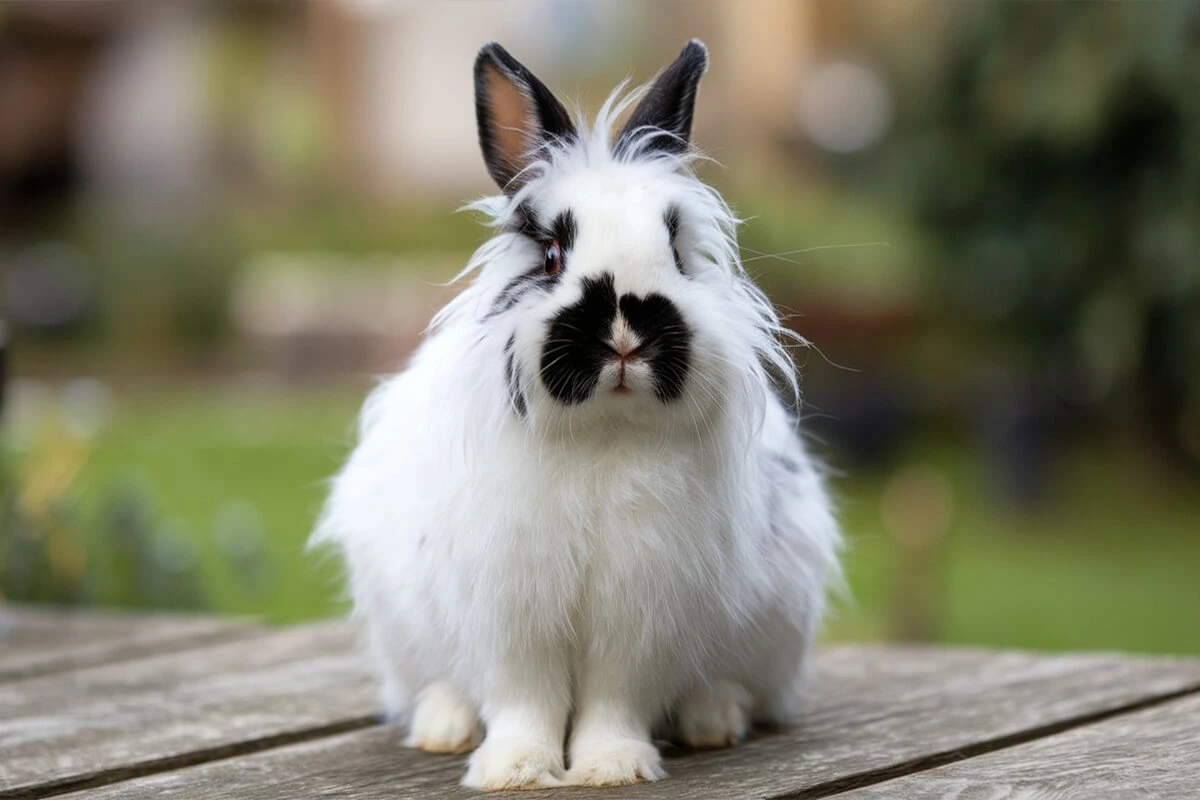English Angora rabbits have a lifespan of 7 to 12 years, but their longevity depends on the quality of care they receive. Providing proper nutrition, regular grooming, and a safe living environment plays a crucial role in maximizing the English Angora rabbit lifespan. These rabbits require dedicated attention due to their long, silky fur and sensitive digestive systems.
Caring for an English Angora rabbit goes beyond basic pet care. Owners must maintain a well-balanced diet, ensure regular vet checkups, and create a comfortable habitat that encourages exercise. Without proper grooming, their dense wool can lead to serious health issues like wool block, which can shorten their lifespan. Understanding their specific needs will help you provide the best possible care and keep your rabbit healthy for years.
This guide will cover essential care tips, including diet recommendations, grooming techniques, habitat setup, and preventative health measures. By following these expert tips, you can help your English Angora rabbit live a long, happy, and healthy life.
Understanding the English Angora Rabbit Lifespan
Average Lifespan of English Angora Rabbits (7-12 Years)
English Angora rabbits typically live 7 to 12 years, but their lifespan depends on various factors, including genetics, diet, grooming, exercise, and medical care. Some rabbits reach the upper end of this range when they receive consistent, high-quality care, while others may face health issues that shorten their lives. Unlike wild rabbits, which have much shorter lifespans due to predators and harsh environmental conditions, pet Angoras thrive in a safe and controlled environment.
Their lifespan closely aligns with that of other domesticated rabbit breeds, but their unique woolly coat adds extra grooming requirements. Without proper grooming, they risk developing health issues like wool block, which can severely impact their longevity. Rabbit owners who understand these challenges can take the necessary steps to ensure a long, healthy life for their pets.
Factors That Affect English Angora Rabbit Lifespan (Genetics, Environment, Care)
Several key factors determine how long an English Angora rabbit lives:
- Genetics: Some rabbits inherit stronger immune systems and better overall health from their lineage. Reputable breeders prioritize strong genetics to minimize the risk of common health issues, but even well-bred rabbits need excellent care to reach their full lifespan potential.
- Diet and Nutrition: A balanced diet consisting of high-quality hay, fresh vegetables, and fortified pellets provides essential nutrients. Poor nutrition weakens the immune system and increases the risk of digestive issues, obesity, and dental disease.
- Grooming and Hygiene: English Angoras require daily brushing to prevent wool block, a life-threatening condition caused by ingesting too much loose fur. Regular nail trims and ear cleaning also prevent infections and mobility issues.
- Living Environment: A clean, spacious, and safe habitat keeps stress levels low and reduces the risk of injury or illness. Rabbits need proper ventilation, soft bedding, and a secure enclosure to prevent accidents or exposure to extreme temperatures.
- Exercise and Mental Stimulation: Daily exercise and playtime strengthen muscles, improve digestion, and prevent obesity. Bored or inactive rabbits develop behavioral issues and health problems that shorten their lifespan.
- Veterinary Care: Routine vet checkups, vaccinations, and parasite prevention treatments help catch and address health problems early. A rabbit-savvy vet provides crucial guidance on keeping an Angora healthy.
Importance of a Proactive Care Routine
Providing consistent, high-quality care ensures an English Angora rabbit lives a long and healthy life. Owners must establish a daily routine that includes feeding, grooming, exercise, and regular health monitoring. Rabbits often hide signs of illness, so checking for subtle changes in behavior, appetite, and droppings helps detect potential problems early.
Preventative care reduces the risk of common rabbit diseases and increases longevity. A well-structured diet prevents digestive issues, while regular grooming eliminates the dangers of fur ingestion. Keeping the rabbit’s living area clean and spacious minimizes stress and prevents infections.
By staying attentive and proactive, owners create the best possible conditions for their English Angora rabbit to live a full and happy life well into its senior years.
Optimal Diet for a Healthy and Long-Lived Angora Rabbit
Hay, Pellets, and Fresh Vegetables
A well-balanced diet plays a crucial role in extending the English Angora rabbit lifespan. The foundation of a healthy diet includes high-quality hay, fortified pellets, and fresh vegetables. Each of these components provides essential nutrients that support digestion, dental health, and overall well-being.
- Hay (70-80% of Diet): English Angora rabbits need unlimited access to Timothy hay, orchard grass, or meadow hay. Hay provides fiber, which maintains a healthy digestive system and prevents gastrointestinal stasis (a life-threatening condition). Chewing hay also naturally wears down their teeth, reducing the risk of overgrowth and dental disease.
- Pellets (10-15% of Diet): High-fiber pellets supplement a rabbit’s diet, ensuring they receive essential vitamins and minerals. Choose plain, high-quality pellets without added seeds, nuts, or dried fruit, as these additives contribute to obesity and digestive issues. A healthy adult Angora rabbit typically eats ¼ to ½ cup of pellets per day, depending on its size and activity level.
- Fresh Vegetables (10-15% of Diet): A variety of leafy greens and vegetables provide additional nutrients. Romaine lettuce, parsley, cilantro, bok choy, and dandelion greens are excellent choices. Introduce vegetables gradually and in moderation to avoid digestive upset. Avoid iceberg lettuce because it contains little nutritional value and can cause diarrhea.
Avoiding Harmful Foods
Certain foods can harm an English Angora rabbit’s health, leading to digestive distress, obesity, or even toxicity. Owners must know which foods to avoid to prevent serious health issues.
- Sugary and Processed Foods: Rabbits cannot digest foods high in sugar, fat, or artificial ingredients. Avoid feeding them bread, pasta, cereal, crackers, or processed snacks. These foods contribute to obesity and digestive blockages.
- Toxic Vegetables and Fruits: Some common vegetables and fruits contain compounds that harm rabbits. Avoid onions, garlic, leeks, chives, rhubarb, avocado, and raw potatoes, as they can cause toxicity, digestive issues, or organ failure. Fruits are nice to eat, but we should not have them too often because they can have a lot of sugar. Limit fruits like bananas, apples (seedless), and berries to small portions a few times a week.
- Legumes and Nuts: Rabbits struggle to digest high-protein and high-fat foods like beans, peas, lentils, nuts, and seeds. These foods lead to bloating and digestive problems.
- Dairy and Meat Products: Rabbits are strict herbivores and cannot digest dairy or meat. Never feed them cheese, yogurt, eggs, or any animal-based products.
Hydration and Supplements
Hydration plays a key role in maintaining a rabbit’s digestive health, kidney function, and overall well-being. A well-hydrated rabbit has a stronger immune system and a lower risk of urinary tract issues.
- Fresh Water Supply: Provide clean, fresh water at all times using a water bowl or bottle. Water bowls encourage natural drinking behavior, while bottles help keep water clean. Refill the water supply daily and check for blockages in water bottles. Dehydration can lead to serious digestive problems, including GI stasis.
- Hydrating Foods: Fresh vegetables like romaine lettuce, cucumber, and bell peppers contain high water content and help keep rabbits hydrated.
- Calcium Balance: English Angora rabbits require calcium in moderation. Excess calcium leads to bladder sludge and kidney issues, so limit high-calcium vegetables like kale, spinach, and parsley to a few times per week.
- Vitamin Supplements: A well-balanced diet provides all the essential nutrients, so most rabbits do not need additional supplements. However, if a rabbit has a specific deficiency, a veterinarian may recommend a vitamin or probiotic supplement. Avoid giving over-the-counter rabbit supplements without consulting a vet.
By maintaining a nutrient-rich diet, avoiding harmful foods, and ensuring proper hydration, owners can help their English Angora rabbits live long, healthy lives free from common digestive and nutritional issues.
Essential Grooming Techniques to Prevent Health Issues
Brushing and Fur Maintenance
Proper grooming plays a vital role in maximizing the English Angora rabbit lifespan. Their long, dense wool grows continuously, requiring daily brushing to prevent tangles, mats, and wool block. Wool block occurs when a rabbit ingests excessive fur while grooming itself, leading to a life-threatening digestive obstruction. Unlike other animals, rabbits cannot cough up hairballs, so removing loose fur through brushing is essential.

Use a wide-tooth comb, slicker brush, and de-shedding tools to gently remove loose hair and prevent mats from forming. Start at the base of the fur and work outward to avoid pulling on the skin. Pay extra attention to high-shedding areas, such as the chest, belly, and hind legs. If mats develop, carefully trim them using rounded-tip grooming scissors, ensuring not to cut the skin.
During seasonal molts, English Angora rabbits shed excessively, making grooming even more critical. Increase brushing frequency to twice daily to minimize loose fur ingestion. Regular grooming not only prevents health issues but also strengthens the bond between the rabbit and its owner.
Nail Clipping and Ear Cleaning
Maintaining healthy nails and ears contributes to the English Angora rabbit’s longevity and comfort. Overgrown nails affect mobility, increase the risk of injury, and cause discomfort. Untrimmed nails can curl into the paw pads, leading to infections and pain.
Check the nails every 3 to 4 weeks and trim them using a rabbit-safe nail clipper. Avoid cutting too close to the quick (the pink blood vessel inside the nail) to prevent bleeding. If a nail starts to bleed, use styptic powder or cornstarch to stop the bleeding. Handling a rabbit’s paws regularly helps it feel comfortable during nail trims.
Ear cleaning prevents infections and ensures good hearing. English Angora rabbits have dense fur around their ears, which can trap dirt, wax, and debris. Check the ears weekly for signs of wax buildup, redness, swelling, or discharge. Use a soft, damp cloth or cotton pad to wipe the outer ear gently. Never insert cotton swabs deep into the ear canal, as this can push debris further inside. If an ear infection develops, consult a rabbit-savvy veterinarian for treatment.
Bathing Risks
Bathing an English Angora rabbit can cause stress, hypothermia, and even shock, so owners should avoid full-body baths. Unlike dogs or cats, rabbits keep themselves clean through self-grooming, and excessive exposure to water disrupts their natural oils. Wet fur also takes a long time to dry, increasing the risk of hypothermia and skin infections.
If a rabbit’s fur becomes soiled, use spot-cleaning techniques instead of full baths. Dampen a soft cloth with warm water and gently wipe the affected area. For stubborn stains, use a rabbit-safe dry shampoo or cornstarch powder, rubbing it into the fur and brushing it out.
Long fur around the hindquarters can collect urine and feces, leading to urine scald or flystrike (a severe condition where flies lay eggs in soiled fur). Regular trimming around the rear area prevents these issues and keeps the rabbit clean.
By following a consistent grooming routine, owners can keep their English Angora rabbits comfortable, healthy, and free from fur-related health risks. Proper brushing, nail clipping, and ear cleaning contribute significantly to extending the English Angora rabbit lifespan while ensuring a happy and active life.
Creating a Safe and Stimulating Habitat for Your Rabbit
Rabbit Hutches and Indoor Setups
Providing a safe, spacious, and comfortable living environment plays a crucial role in extending the English Angora rabbit lifespan. These rabbits need an enclosure that protects them from harsh weather, predators, and stressful conditions. Whether housing them indoors or outdoors, owners must prioritize ventilation, cleanliness, and security to keep their rabbits healthy and happy.

For outdoor setups, choose a sturdy, predator-proof hutch with a raised floor to prevent dampness and cold exposure. The hutch should have a weather-resistant roof, strong wire mesh sides, and a secure locking system. A proper outdoor enclosure includes a sheltered section for warmth and privacy, along with an open area for fresh air and natural light. Place the hutch in a shaded, quiet location to protect the rabbit from extreme heat, rain, and wind.
For indoor housing, use a large rabbit pen or spacious cage that allows the rabbit to stretch, hop, and explore. A single-level cage often feels too restrictive, so opt for a multi-level playpen with ramps and hideouts. Line the floor with soft bedding or a fleece mat to protect their feet from sore hocks. Keep their living space clean by removing waste daily and changing bedding weekly.
Regardless of the setup, ensure the enclosure measures at least 6 feet long, 2 feet wide, and 2 feet tall, giving the rabbit enough space to move comfortably. Never use wire-bottomed cages, as they cause foot injuries and discomfort. A well-structured habitat reduces stress, prevents illness, and supports a long, healthy life.
Safe Play Areas
Creating a safe play area allows an English Angora rabbit to exercise, explore, and interact without risk. These rabbits need daily out-of-cage time to maintain muscle strength, mental stimulation, and overall well-being.
For indoor play areas, rabbit-proof the room by covering electrical cords, removing toxic plants, and securing loose objects. Block off areas where the rabbit could get stuck or injured. Lay down rugs or foam mats for traction, as slippery floors cause joint strain and injury. Provide toys, tunnels, and hiding spots to encourage natural behaviors like digging, chewing, and hopping.
For outdoor playtime, use a secure exercise pen or enclosed run with a solid base and predator-proof fencing. Always supervise outdoor play to prevent escape or exposure to potential threats like predators, toxic plants, and extreme weather conditions. A shaded area protects the rabbit from heatstroke, while tunnels and shelters provide safe hiding spots.
By setting up a safe and engaging play environment, owners help their English Angora rabbits stay active, reducing the risk of obesity, boredom, and destructive behaviors.
Bunny Exercise Routines
Regular physical activity helps extend the English Angora rabbit lifespan by preventing obesity, joint stiffness, and digestive issues. Rabbits thrive when they have at least three to four hours of exercise per day, so owners must encourage movement through structured play and free-roaming time.
- Hopping and Running: Rabbits naturally love to run and jump. Set up small hurdles or agility courses with low obstacles to encourage natural movement.
- Foraging and Puzzle Toys: Hide small treats or fresh vegetables inside foraging mats, cardboard tubes, or puzzle feeders to keep the rabbit engaged.
- Tunnel and Maze Exploration: Provide tunnels, ramps, and hideouts to simulate a burrow-like environment that encourages running and digging.
- Interactive Play: Some rabbits enjoy playing with lightweight balls, stacking cups, or hanging chew toys. Owners can also engage their rabbit by offering treats for small tricks, such as standing on hind legs or hopping onto a platform.
A consistent exercise routine keeps an English Angora rabbit physically fit, mentally stimulated, and emotionally happy. Without regular activity, rabbits become bored, overweight, and prone to health issues. Encouraging natural movement and play significantly improves their quality of life and longevity.
Preventative Healthcare for a Longer Angora Rabbit Lifespan
Regular Vet Checkups and Vaccinations
Scheduling regular vet checkups and vaccinations plays a vital role in extending the English Angora rabbit lifespan. These rabbits require specialized care from a rabbit-savvy veterinarian who understands their unique health concerns. Routine vet visits help detect illnesses early, ensuring a longer and healthier life.

Owners should take their English Angora rabbit for a checkup at least once a year. Senior rabbits, those over five years old, benefit from biannual exams to monitor age-related conditions. During each visit, the vet checks for dental problems, digestive health, weight changes, and early signs of disease. Rabbits often hide symptoms of illness, so regular exams help catch issues before they become serious.
Vaccinations protect against deadly rabbit diseases, including Rabbit Hemorrhagic Disease Virus (RHDV-1 & RHDV-2) and Myxomatosis. These viruses spread through insects, contaminated objects, and direct contact with infected rabbits. If living in an area where these diseases pose a risk, owners should follow their vet’s vaccination recommendations to prevent life-threatening infections.
Parasite prevention also plays a key role in maintaining health. Flea, mite, and worm infestations cause discomfort and lead to secondary infections. A vet can recommend safe parasite treatments and regular checkups to keep the rabbit free from external and internal parasites.
By keeping up with routine vet visits, vaccinations, and parasite prevention, owners provide their English Angora rabbit with the best possible chance for a long, healthy life.
Common Rabbit Diseases
Understanding common rabbit diseases helps owners recognize symptoms early and seek treatment before the condition worsens. Several health issues affect the English Angora rabbit lifespan, so learning about these risks improves preventative care.
- Gastrointestinal Stasis (GI Stasis): When the digestive system slows down or stops completely, rabbits experience pain, bloating, and loss of appetite. Lack of fiber, dehydration, stress, or an underlying illness often causes GI stasis. If a rabbit stops eating or pooping for more than 12 hours, immediate vet care becomes necessary.
- Wool Block: Due to their long fur, English Angora rabbits have a higher risk of wool block, a condition where ingested fur causes an intestinal blockage. Unlike cats, rabbits cannot cough up hairballs, making this a serious concern. Daily brushing, a high-fiber diet, and encouraging exercise help prevent wool block.
- Dental Disease: Overgrown teeth cause pain, difficulty eating, and abscesses. Rabbits need constant hay consumption to keep their teeth worn down naturally. Signs of dental problems include drooling, weight loss, and selective eating.
- Respiratory Infections (Snuffles): Bacteria like Pasteurella multocida cause nasal discharge, sneezing, and eye infections. Stress, poor ventilation, and dirty living conditions increase the risk of respiratory illnesses.
- Sore Hocks (Pododermatitis): Wire-bottom cages or hard surfaces cause pressure sores on a rabbit’s feet. Soft bedding, clean living areas, and regular foot checks prevent this painful condition.
- Urinary Issues (Bladder Sludge and Stones): Excess calcium in the diet leads to thick, chalky urine that forms painful stones. A proper calcium-balanced diet and sufficient water intake prevent urinary complications.
By recognizing symptoms early and providing proper care, owners can protect their English Angora rabbit from life-threatening diseases and extend its lifespan.
Emergency Care Tips
Knowing how to handle rabbit health emergencies makes a huge difference in life-threatening situations. Since rabbits deteriorate quickly when sick, immediate action often determines survival.
- Loss of Appetite (GI Stasis or Wool Block): If an English Angora rabbit refuses food for more than 12 hours, act quickly. Offer fresh hay, water, and leafy greens. If the rabbit shows signs of pain (hunched posture, teeth grinding), seek emergency vet care.
- Difficulty Breathing (Respiratory Distress): If a rabbit breathes heavily, wheezes, or flares its nostrils, it could have a severe infection or blockage. Keep the rabbit calm and rush to a vet immediately.
- Limping or Leg Injuries: Rabbits have fragile bones. If the rabbit suddenly stops using a leg, refuses to move, or shows swelling, avoid handling the injury and contact a vet.
- Excessive Drooling or Swelling (Dental Emergency): Overgrown or infected teeth cause pain, drooling, and weight loss. A vet must trim overgrown teeth or treat abscesses before they worsen.
- Head Tilt or Loss of Balance (Neurological Issues): If a rabbit tilts its head to one side, falls over, or circles in one direction, it may have E. cuniculi (a parasite infection), an inner ear infection, or a neurological problem. This condition requires urgent veterinary care.
- Flystrike (Maggots on the Skin): In warm weather, flies lay eggs in dirty fur, wounds, or soiled areas, leading to deadly maggot infestations. If maggots appear on the rabbit’s skin, rush to a vet immediately. Regular grooming and keeping the hutch clean prevent flystrike.
Keeping an emergency vet contact on hand ensures fast action in case of illness or injury. A first-aid kit with critical supplies (styptic powder, critical care formula, syringe, and clean towels) helps provide temporary care before reaching a veterinarian.
By staying proactive about health care, recognizing early symptoms, and handling emergencies quickly, owners can protect and extend the English Angora rabbit lifespan while ensuring a happy, healthy life for their beloved pet.
Conclusion
Caring for an English Angora rabbit requires dedication, but the reward of a long, healthy, and happy life makes the effort worthwhile. By focusing on proper nutrition, regular grooming, a safe habitat, exercise, and proactive healthcare, owners can significantly extend the English Angora rabbit lifespan, ensuring their furry companion thrives for years.
Providing a balanced diet with plenty of hay, fresh vegetables, and quality pellets supports digestion, dental health, and overall well-being. Avoiding harmful foods and ensuring proper hydration keeps the rabbit free from common health issues like GI stasis and urinary problems.
A consistent grooming routine plays a critical role in maintaining health. Daily brushing prevents wool block, while nail trimming and ear cleaning reduce discomfort and infections. Avoiding full-body baths protects the rabbit from unnecessary stress and hypothermia.
Creating a safe, spacious environment allows the rabbit to explore, exercise, and stay active. A well-structured hutch or indoor setup, along with secure play areas, prevents injuries and stress-related illnesses. Encouraging movement through bunny exercise routines helps maintain a healthy weight and prevents boredom.
Scheduling regular vet checkups, keeping up with vaccinations, and recognizing early signs of illness ensures quick treatment before minor issues become serious. Learning about common rabbit diseases helps owners stay prepared, while emergency care knowledge allows for immediate action in critical situations.
By providing proper care, love, and attention, owners can maximize the English Angora rabbit lifespan, allowing their pet to enjoy a long, fulfilling life. The commitment to consistent care and a healthy lifestyle creates a strong bond between rabbit and owner, making every moment together truly special.
Read More About The English Angora Rabbit Breed from Here
Pick A Nice and Unique Name for your Fluffy Rabbit Friend From Our 100 names Guide
You Can Check The Angora Price From Here.
Find Out More about Pets and Different breeds From HERE!
Discover the Best stuff for your Pet On Pet MD Official
